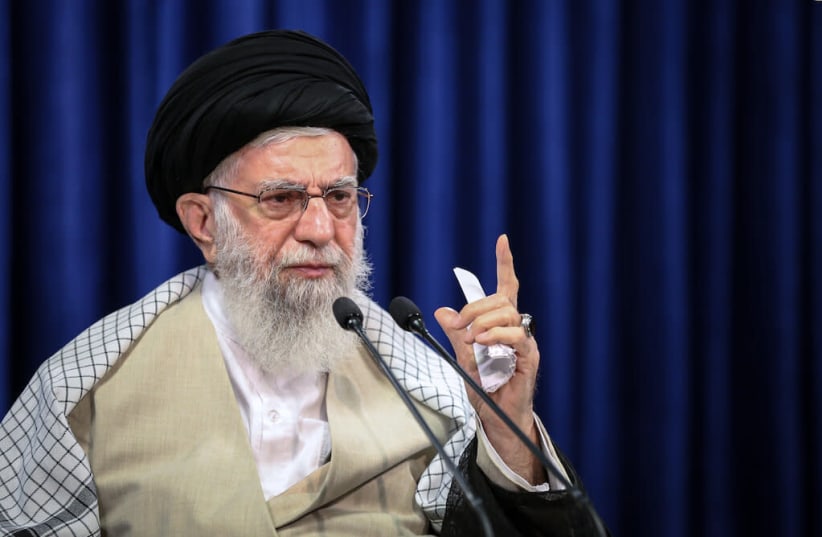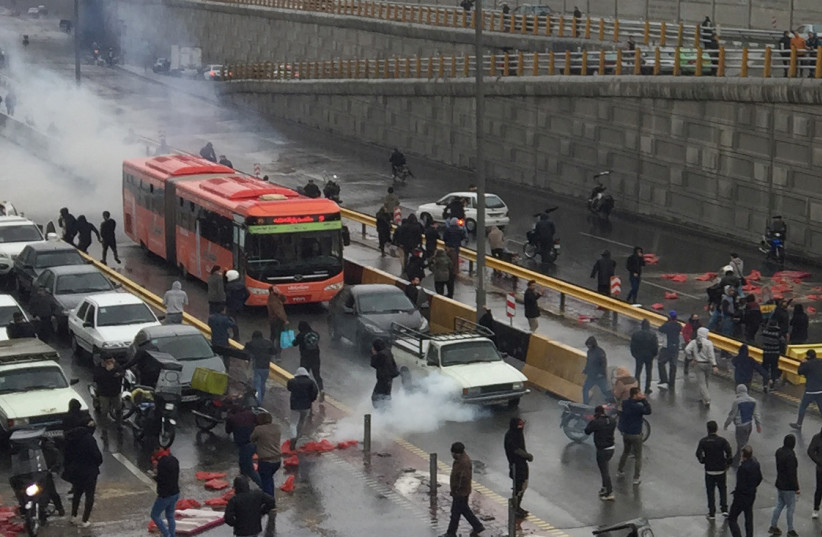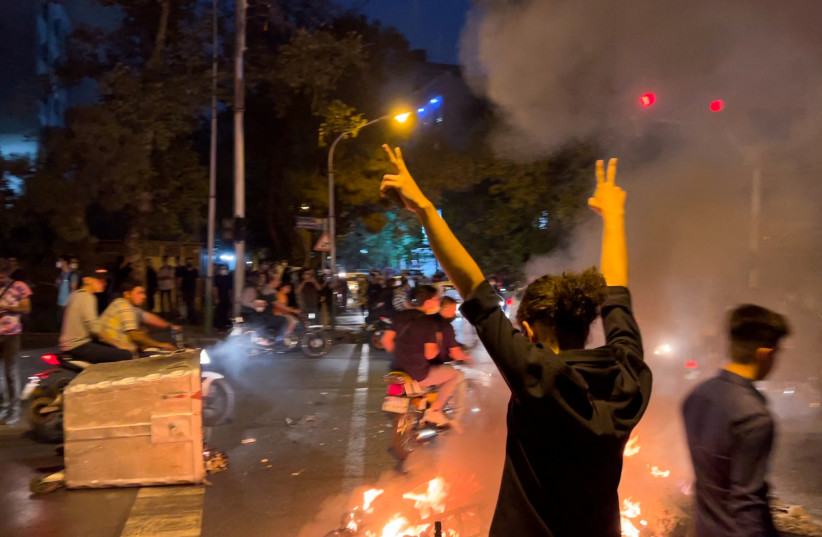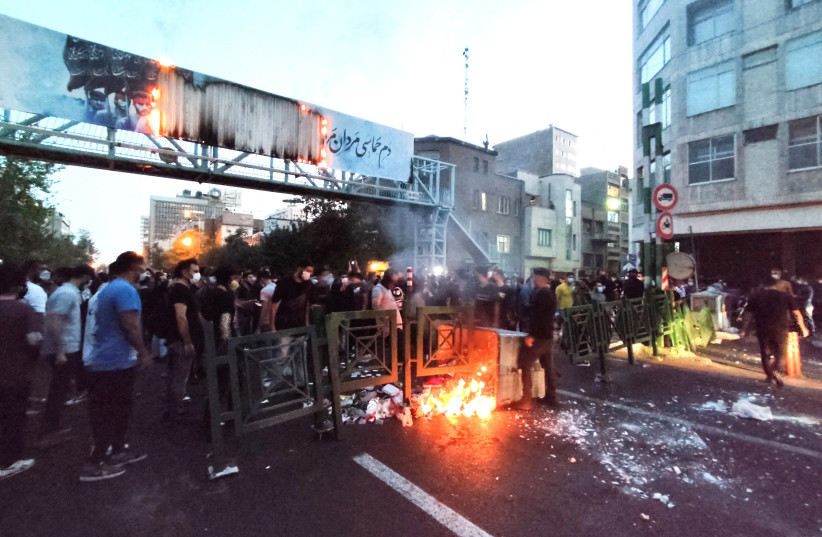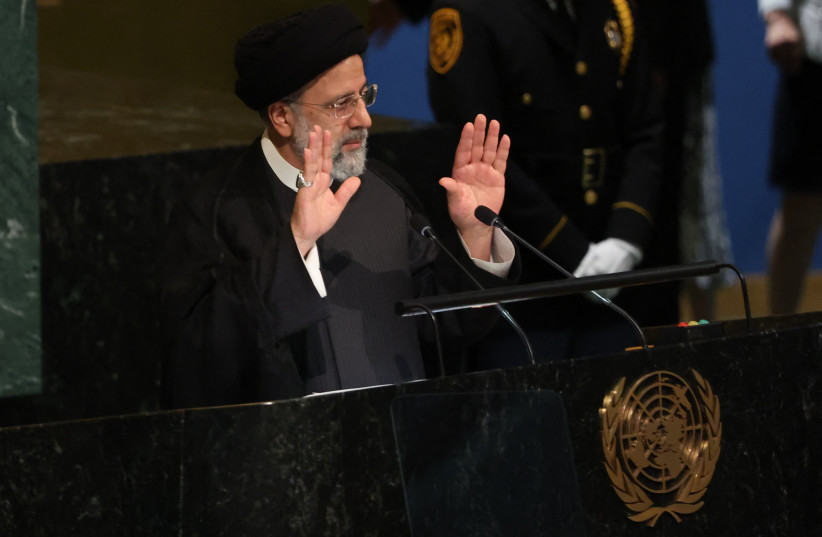Was the writing on the wall for the quick spread of protests after the killing of Masha Amini? According to the Iranian Students' News Agency (ISNA), political science researchers had already warned that such a situation was likely to break out earlier this year.
In a paper titled "Analysis of Social Guild Protests in Iran from the Perspective of Street Politics Theory," Khalilollah Sardarnia, a political science professor at Shiraz University, and Hengameh Alborzi, a PHD student at the university, argued that protests which swept Iran in 2017 were a "turning point" with economic and social change becoming the main drivers of protests and the behavior of protesters drastically changing.
The paper was published in Allameh Tabataba'i University's Quarterly of Political Strategic Studies in the Spring of 2022.
The 2017-2018 Iran protests
In December 2017, protests broke out throughout Iran in light of declining economic conditions and government corruption, eventually expanding into anti-government protests. Protests against laws mandating hijab also broke out during this time.
In November 2019, protests broke out again after the Iranian government implemented a price hike on fuel prices. The Iranian government implemented a brutal crackdown on the protests, with the wave of demonstrations later called "Bloody November." As many as 1,500 Iranian protesters were killed by Iranian forces during the demonstrations.
The paper referred to the protests from 2017 onwards as "perhaps the most important political-social action or events in Iran's recent years."
The researchers noted that the protests in 2017 and since have shown the "lack of trust of the people" in the "government officials and elites," leading them to pursue their demands through spontaneous street protests and strikes.
"The recent protests are important due to their multi-layered nature and their diversity and extent and the impact they have had on national cohesion," wrote the researchers.
The authors also noted that the protests that swept Iran in 2019 were some of the "most important and comprehensive popular protests across Iran since the [1979] revolution." While the protests started out relatively peaceful, they gradually developed into violence. (The researchers did not note how the violence developed and did not mention the government's violent and deadly crackdown on protesters in 2019)
Latest protests spontaneous, with no clear leadership
A major factor which makes the protests that have swept Iran since 2017 different than previous protests is that they have largely erupted spontaneously lacking any clear leadership, according to the researchers.
While protests used to be led largely by trade unions and civil organizations, workers became pessimistic and distrustful of these organizations and began organizing spontaneous protests over social media.
"With the emergence of today's complicated and confusing conditions, discriminations and inequalities, and fear of unknown futures, the 'inner self' has awakened them and warned them to protest and demand for a better life," wrote the researchers.
As the nature of the protests changed, blue collar workers moved from the margins of politics to the center of action, taking to the streets to influence government decisions and policy making and make their voices heard, the researchers added.
"With the rise of dissatisfaction and injustices in relation to workers and various trades such as teachers, ranchers, farmers, fishermen, etc., these protesters spontaneously entered the squares and streets to express their feelings, anger, shouts and deep-rooted dissatisfactions against the government and even trade unions and civil society have become passive and ineffective. They decided in the middle of the street, what slogan to present and how far to advance," wrote Sardarnia and Alborzi.
"From this historical moment in Iran, something is happening that little by little breaks the previous political taboos governing the atmosphere of the society and brings different classes to the streets under different pretexts, and of course, most prominently, to protest against economic inequalities, unemployment, and corruption, without rely on an institution or organization as an intermediary between themselves and the government."
Social media driving latest protests
Social media, such as Telegram and Instagram, have become a major factor in mobilizing and generating protest movements, according to the paper.
Social media and the use of cell phones have helped people publicize, discuss and learn about grievances, economic crises and injustices, driving civilians to gather and protest even without a specific leader.
Protests becoming more extreme
Sardarnia and Alborzi noted that economic crises and a deterioration in the welfare of citizens has caused the anger and disgust of workers to "erupt."
The researchers pointed out that in the protests since 2017 there had been an "almost unprecedented breaking of taboos in slogans, confrontations with the government, and an increase in radicalism with the acceptance of relatively high political and financial costs to achieve the goals."
Growing links between workers from different sectors
Workers and students from different sectors have been uniting more strongly in the protests since 2017, according to the researchers.
One example was when students from major universities in Iran expressed support for the rights and protests of trade unions, including truck drivers and teachers.
The researchers noted that the move by blue-collar and white-collar workers to protest together could force governments to accept their demands and reduce social inequalities in the present and future.
'Almost non-stop protests' have swept Iran since 2017
Sardarnia and Alborzi stressed that the protests that began in 2017 have continued until today and "have not stopped in any way," adding that the protests have spread to multiple groups in Iranian society.
The researchers pointed out that young adults, teenagers and marginalized people in urban settings are the main drivers of recent protests as the economic situation in Iran has deteriorated.
Protesters' slogans focused on economy, government
The Iranian political science researchers evaluated the slogans used by protesters in demonstrations in recent years, finding that 35.6% were economic, 32.1% were political, 12.3% were social, 10% were motivational, 5.4% were environmental and 4. 1% were legal.
Economic slogans focused on poverty, class conflict and economic corruption. Political slogans included calls for officials to resign, support for the Shah, demands for political prisoners to be released, objections to foreign policy and calls for reform. Social slogans focused on discrimination, including gender and ethnic discrimination.
Motivational slogans focused on supporting other protesters, asking the military for help and asking police not to suppress protesters. Environmental slogans focused on floods, pollution and droughts. Legal slogans focused on citizens' rights and problems caused by the country's constitution.
The researchers reached these conclusions by analyzing slogans from interviews, statements, signs and photos from protests.
'The masses are no longer passive, indifferent'
The authors concluded the paper by pointing out that the recent protests show that the people of Iran, from all walks of life, are demanding action against corruption and discrimination and expressing outrage at the quality of life in the country.
"The street tells us with the most concrete, tangible and clear statement that the masses of people, unlike the past, are not condemned to remain on the sidelines of politics, passive, indifferent and mere spectators, but are active actors in the social and political arena and challenge governments by continuously expressing their economic, union and class demands. The street tells us where these decision-makers have gone unilaterally and out of touch with the citizens and the poor urban masses, where they have taken a step in a dead-end road, where they have stood too far, where they have stood too close, where they are forbidden to enter, where they have gone astray."
The authors added that it was "noteworthy" that while protesters did not see internal or external conspiracies, such as pressure from foreign media or governments, as playing a role in the protests, experts did see it playing a role, albeit a weak role.
Researchers tell Iranian government should listen to protesters
Sardarnia and Alborzi warned that officials should consider the interests and demands of the protesters because "a spark is enough for all the protestors with their many and diverse attitudes and goals to pour into the streets and these movements will turn into small and big riots."
The researchers suggested that the government conduct fundamental reforms, especially in the economy, and working to rebuild the lost trust of the people.
"Not making people's lives more difficult and limiting, both economically and socially, will be a positive step to gain this lost trust," wrote the researchers.
The academics also suggested that the government make protest movements official and create a "free and open political arena and mechanism to express protests."
